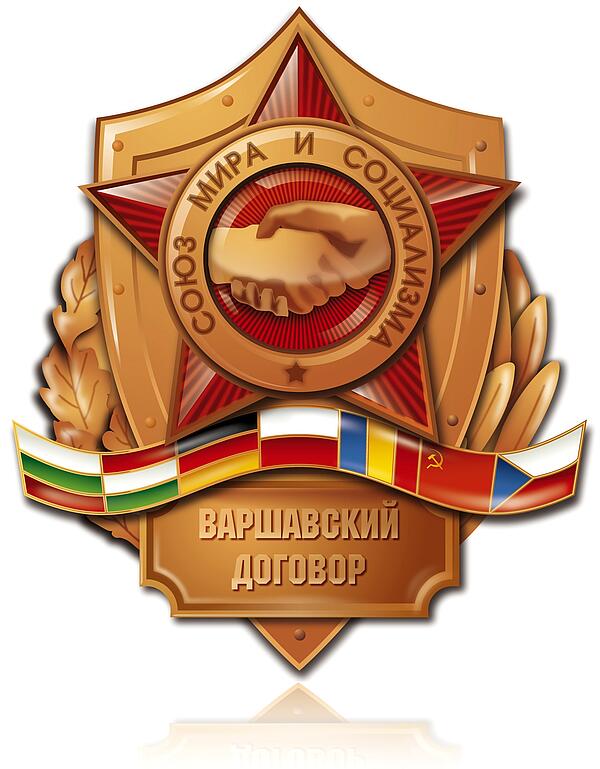The Warsaw Pact
The Warsaw Pact was created on 14 May 1955. Its formation was in part a response to the incorporation of West Germany to Nato on 9 May 1955. It was formed of eight states: Bulgaria, Czechoslovakia, East Germany, Hungary, Poland, Romania, the Soviet Union and Albania (who left in 1968). Troops from the Warsaw Pact were put to use during the Soviet invasion of Czechoslovakia in 1968.
The Warsaw Pact, or the ‘Treaty of Friendship, Cooperation and Mutual Assistance’, was dominated by the Soviet Union. Soviet manufactured weaponry, tanks and planes were used and its military command was dominated by Moscow.
Similar to NATO, the Warsaw Pact had a political Consultative Committee with a civilian Secretary-General. Like NATO, it was led by a commander-in-chief. The Warsaw Pact was a collective defense treaty. Each member pledged to defend other members if they were attacked.

Unlike NATO, which was primarily made up of professional soldiers, the Warsaw Pact depended on conscription. This probably undermined the professional capability of the Warsaw Pact. In the Western bloc, the Warsaw Pact was depicted as a terrifying military machine poised to attack Western Europe. However, this was a distorted image of the Pact. Figures acquired by the International Institute for Strategic Studies (IISS) in 1983 indicated that the Warsaw Pact was weaker than NATO. The Pact could only claim a numerical supremacy in battle tanks and fighter aircraft.
A Comparison of the Warsaw Pact and Nato, based on figures from the International Institute for Strategic Studies in 1983
| Warsaw Pact | Nato | |
| Ground Forces | 1,714,000 | 1,986,000 |
|---|---|---|
| Divisions | 85 | 90 |
| Main Battle Tanks | 25,490 | 20,722 |
| Anti-Tank guided weapon launchers | 1,787 | 2,080 |
| Submarines | 190 | 182 |
| Anti-Submarine Submarines | 183 | 385 |
| Capital Ships (eg. carriers) | 206 | 314 |
| Other Naval Craft | 607 | 821 |
| Fighter Aircraft | 8,512 | 4,338 |
| Anti-aircraft guns and surface to air missiles. | 6,737 | 6869 |
NATO worried that the Warsaw Pact would realise that its weapons were less advanced than NATO’s and would resort to using nuclear weapons. This would have catastrophic effects on West Germany, with the predicted number of deaths reaching 10 million. The After the collapse of the Warsaw Pact, the Polish government released papers outlining plans for such an attack.
When the Berlin Wall collapsed and the iron curtain fell, the Warsaw Pact became redundant. It was dissolved on 1 July 1991. Bar Russia, all of its former member states have since joined NATO.
MLA Citation/Reference
"The Warsaw Pact". HistoryLearning.com. 2025. Web.
